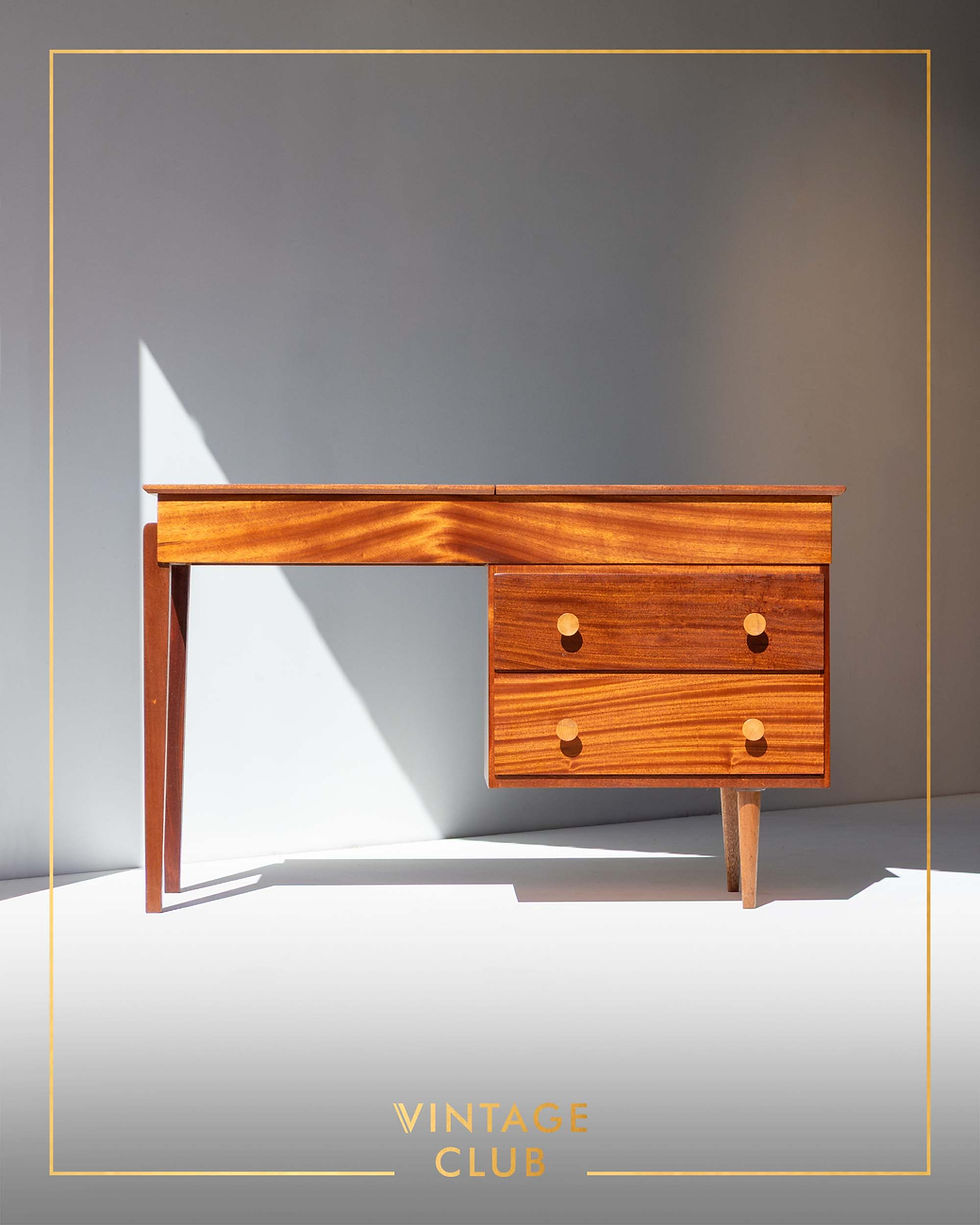‘Dunvegan’ Teak Sideboard by Tom Robertson for A.H. McIntosh, Scotland, 1970s
Iconic Vintage 'Dunvegan' Sideboard by McIntosh
Designed by Tom Robertson for A.H. McIntosh of Kirkcaldy, the celebrated Dunvegan sideboard showcases the elegance and craftsmanship of British mid-century design. First introduced in the 1960s and revitalised in the early 1970s, the collection was reimagined with elongated sculptural handles and refined detailing, giving the piece a lighter, more sophisticated presence.
Handcrafted in Scotland from richly grained teak, this sideboard is both functional and beautifully proportioned. The layout comprises a large central cupboard with a sinuous interior shelf, a drop-down cabinet fitted with a retractable black melamine tray for preparing and serving drinks, and three graduated drawers—the top retaining its original dividers.
The piece is completed with McIntosh’s distinctive sculpted teak handles and finely balanced legs, lending it a graceful stance. At once practical and stylish, the Dunvegan offers generous storage and timeless appeal, making it an ideal statement for both vintage-inspired and contemporary interiors.
Each McIntosh design was named after a Scottish location—Dunvegan being a village on the Isle of Skye—adding cultural resonance to its heritage. Today, it remains one of the most admired and collectible McIntosh sideboards, valued for its quality, design pedigree, and enduring modernist aesthetic.
Designer Tom Robertson
Maker A.H. McIntosh
Country United Kingdom
Date 1970s
Size W 201cm, D 48cm, H 76cm
Materials: A combination of solid and veneered Teak crafted to a very high standard.
Condition: In excellent vintage condition. We have carefully refinished this piece to preserve the heritage.
A.H. McIntosh – Designer Profile
Founded in 1869 by Alexander Henry McIntosh (1835–1919) in Kirkcaldy, Scotland, A.H. McIntosh quickly earned a reputation for quality craftsmanship. The firm gained international recognition after exhibiting at the Paris World Fair in 1878 and the Sydney Exhibition in 1879, establishing itself as a respected name in British furniture making.
By the 1950s, McIntosh began transitioning from traditional styles toward a more contemporary aesthetic, heavily influenced by the clean lines and functionality of Scandinavian design. To stay at the forefront of modern furniture, the company employed trained industrial designers, including Valentino (Val) Rossi—creator of the original Dunvegan range—and later Tom Robertson, who expanded the collection with some of the firm’s most enduring designs. Each range was named after a Scottish town, a tradition that gave the brand both cultural identity and a sense of place.
McIntosh sideboards, dining suites, and cabinets of the 1960s and 70s remain highly regarded for their refined proportions, sculptural handles, and warm teak finishes. Many models were so successful they remained in production for over two decades, becoming staples in homes across the UK.
By the 1990s, the rise of cheaper imported furniture reshaped the domestic market, and McIntosh shifted its focus to educational furniture under the name ESA McIntosh. Today, however, the company’s mid-century pieces are in strong demand worldwide, prized for their quality construction, modernist elegance, and enduring design value.
‘In this factory we have the perfect example of management having enough courage to give the designers freedom and setting their sights on international rather than national standards.’ - Tom Robertson
As with many quality Mid-Century pieces, this design thoughtfully pairs solid wood construction with a premium wood veneer—an approach widely used at the time to highlight beautiful grain patterns while ensuring lasting stability.
We try to capture the condition of our items in our photographs as best as possible. Prior to dispatch all items are carefully cleaned and re-coated with danish oil to ensure your item is looking its best when delivered.






































